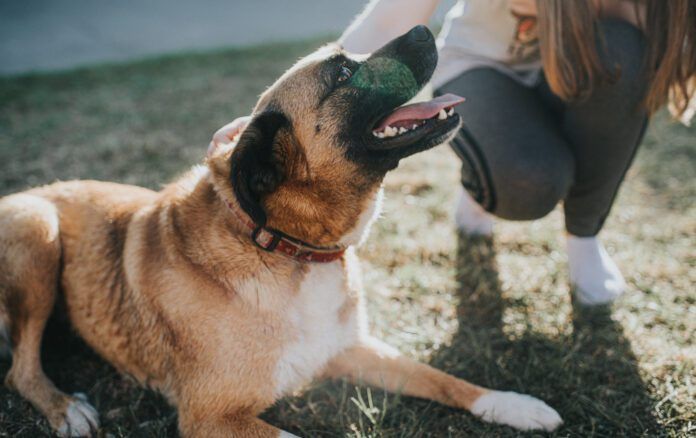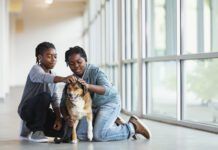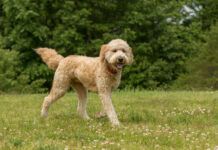Adding a new dog to the family is an exciting time. It also has the potential to be a little stressful, especially as everyone is getting to know each other, or when you’re welcoming an older dog rather than a puppy.
Here are five ways to help smooth the transition:
1. Ease Into Things
When you first get home, do a little on-leash exploring of the yard and give your dog an opportunity to relieve herself outside. It’s understandable that humans in the household—especially kids—will be excited but aim for calm introductions and don’t smother your dog with affection. You know your dog will be your new best friend, but your dog is just trying to figure out what the heck is going on. Introduce her to canine housemates slowly and be prepared to separate dogs as necessary if your new dog looks overwhelmed by the interaction. Provide a comfortable spot to rest and respect the area as her personal space.
While you may ultimately want to change your dog’s diet, we recommend waiting until she’s a little more settled before introducing dietary changes. Speaking of diet, don’t be alarmed if she’s refusing treats and picks at meals or isn’t eating in those first couple of days—especially if she’s visibly nervous. Don’t make a big deal of it (that can make things worse!) and know that a healthy dog won’t starve herself.
2. Establish a Routine and Clear Expectations
Routines are comforting for the predictability they provide. Feed and take your dog out on a schedule to help set your dog up for housetraining success. Even if she’s older, or you’ve been told she’s housetrained, it’s best to approach the situation as though she’s a young puppy: closely supervise and take her out often!
Set clear expectations from the beginning. If you don’t want your dog on the couch, don’t invite her up as a special treat in the first week home because she looks sad and you think she needs a cuddle. (If she’s initiating a cuddle session, go for it! Just do it in a dog-friendly area.)
3. Train as a Bonding Opportunity
As you navigate your initial weeks together, reward generously if practicing simple obedience behaviors like sit or responding to her name—and anytime she’s doing something you like: lying calmly at your feet, not jumping on the counter when you’re in the kitchen, etc. Teach her you’re an endless source of good things.
Experiment a little to see what your dog likes best. Try different treats. Try different toys. Try different types of petting. Let yourself be a little silly and see how she responds. Be careful not to overdo it, especially in the beginning. It’s easy to come on a little too strong and accidentally overwhelm a dog we’re trying to connect with. Don’t get discouraged if your best attempts to connect seem to fall flat, especially within the first several months of the new relationship. You’re still getting to know each other!
Attending a well-run group training class is also great for bonding. If scheduling allows, I like to let dogs settle in for those first three weeks before joining a class. Schedules don’t always work out that way though, so if you’re attending sooner, be willing to adjust your expectations accordingly. That might mean you and your dog sit together and watch class more than you actively participate for the first week or so. That’s OK, it’s still a shared experience and an opportunity for you to learn more about what your dog needs to feel safe and relaxed.
4. Have Safety Precautions in Place
We recommend arriving prepared with a collar and ID tag as you pick up your new dog. I like to use nylon or cloth martingale collars for their limited-slip feature that allows the collar to tighten enough to not slip over the dog’s head—especially if they get happen to get spooked while on-leash—but not continue to constrict around the neck like a choke chain.
If your dog has already been microchipped, make sure to update the contact information. If your new dog has not been microchipped, have that done at a wellness visit with your vet.
If you have a fenced yard, be cautious about leaving your new dog outside unsupervised during the initial adjustment period. Many dogs who land in shelters or rescue facilities ended up as strays because of their escape-artist tendencies!
5. Be Patient!
Remember that all dogs are individuals with unique needs and different quirks. The time spent supporting your dog as she adjusts to her new home is an important part of getting to know each other, and it will help build a strong foundation for a wonderful life together.
It depends!
Some trainers refer to the 3-3-3 Rule when giving clients a general idea of what to expect in terms of the time it takes a shelter or rescue dog to adjust to a new home. In short, the rule suggests it takes three days for a dog to begin to relax, three weeks for a dog to feel settled enough to begin to show her true colors (the good and the bad!), and three months to feel bonded and able to really begin to enjoy life in her new forever home.
While some dogs may adjust in alignment with this schedule, it’s not the case for all dogs, and general concepts like the 3-3-3 Rule have the potential to leave us feeling like we’re doing something wrong if our new dog doesn’t seem to be adjusting according to the timeline.
In recognition of every dog’s unique temperament and life history, we prefer to describe adjustment in terms of phases, and without the potential pressure of a calendared timeline.






